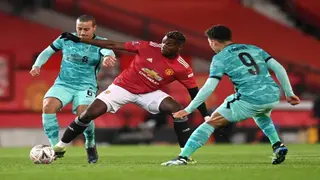Where to watch the FIFA World Cup in 2022: A guide on how to watch this year’s World Cup
Football
English Premier League clubs unanimously agreed to introduce the semi-automated offside technology(SAOT) during a shareholders meeting on April 11.
The ground-breaking change will see a radical change to how offside decisions are made, with plans underway to have it ready for next season.

"The technology will provide quicker and consistent placement of the virtual offside line, based on optical player tracking," read part of the statement from the Premier League.
The technology is set to improve the long periods of time used by the Video Assistant Referee(VAR) to arrive at offside decisions.
Where to watch the FIFA World Cup in 2022: A guide on how to watch this year’s World Cup
Football
PAY ATTENTION: stay informed and follow us on Google News!
It will also improve efficacy and eliminate glaring instances like the controversy witnessed during Liverpool's visit to Tottenham on September 30, 2023, where a Luis Diaz goal was wrongly disallowed.
Apart from saving time, it will also reduce the risk of injuries. At the moment, assistant referees have been instructed to put their flags down and let play develop in the 'delayed offside' protocol. In January, Manchester City lost Ederson to injury after the goalkeeper collided with Newcastle United's Sean Longstaff despite the Magpies player being offside.
With the new technology, assistant referees will be informed when a player is offside and required to raise their flags immediately.
Well, those are just a couple of the benefits of the technology, but how does it work? Sports Brief breaks it down.
It is important to note that even with the introduction of the SAOT, the current system of hawk-eye's virtual offside line technology will still remain in place as a backup in cases where there are many players for SAOT to determine who was where correctly.
FIFA World Cup 2022: ball, price, design, weight, photos
Football
At the 2022 FIFA World Cup in Qatar, the world governing body had 12 cameras underneath the roof of the stadium to track the ball and 29 points of individual players. These 29 points are all the body parts of a player that can legally play the ball.
A measurement unit was then placed inside the ball, which relayed information 500 times per second to the VAR room. If a player is offside, the player, the VAR room gets an automatic alert and they confirm that the information has been recorded correctly before notifying the in-field referee.
Apart from the World Cup, the technology has been used in the 2023 Women's World Cup, the 2022/2023 Champions League, Serie A, among other competitions.
The SAOT will be used when a goal has been scored or in a decision that alters the course of the match, i.e., a penalty or red cards. It will confirm whether the goalscorer or whoever has been fouled was in an onside position.
The biggest World Cup snubs: A list of footballers left out of their countries’ World Cup squad
Football
The other major significance of the technology is that fans will be 'involved' in the decision-making process.
"It will produce high-quality broadcast graphics to ensure an enhanced in-stadium and broadcast experience for supporters."
Sports Brief also reported on all the VAR errors made in the Premier League, as the refereeing body, PGMOL, owned up to a 'human error' after the aforementioned Tottenham vs Liverpool game.
Last year alone, the body admitted to more than seven errors, leading to more disgruntlement about the application of VAR in the top division.